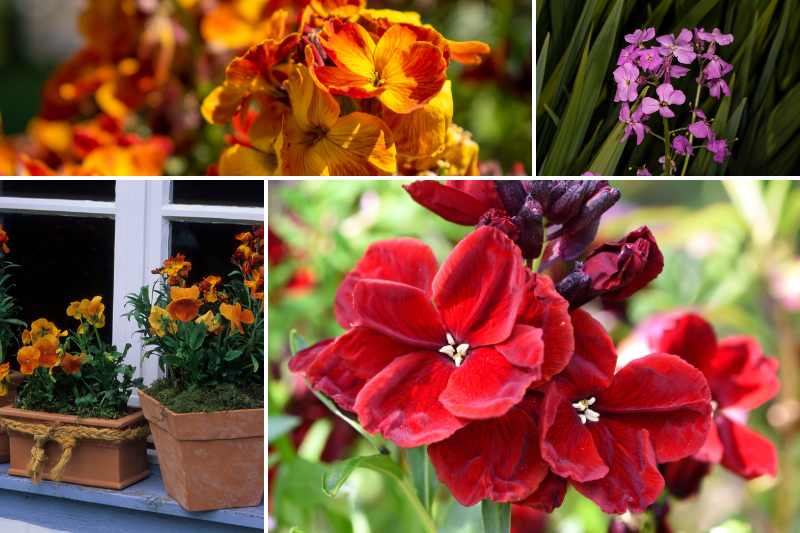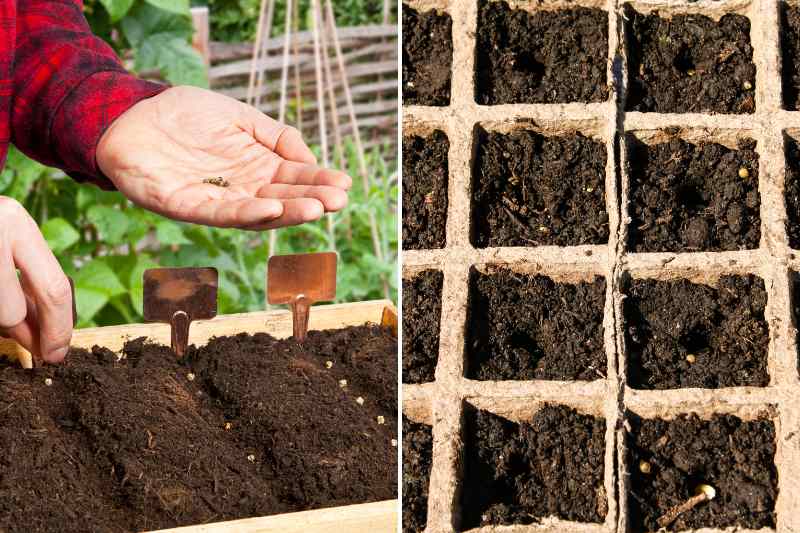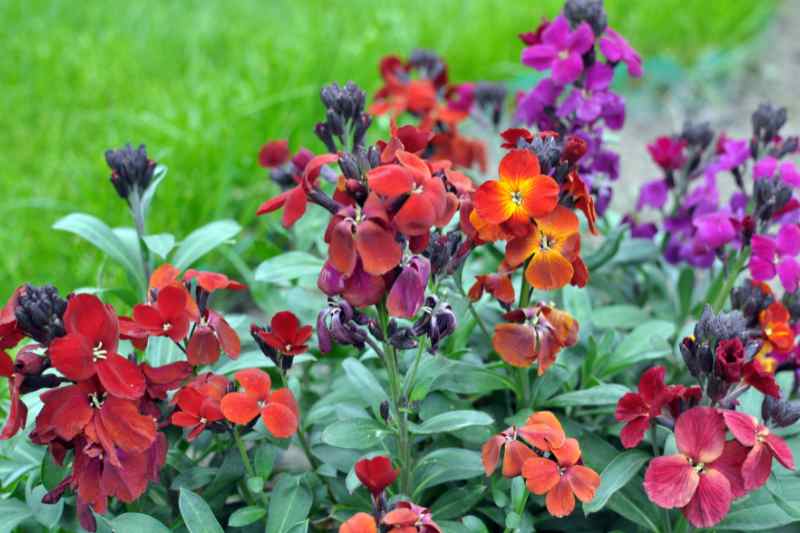Simple and iconic spring plants, perennial wallflowers are quite easy to grow from seed. Once planted, in the conditions they prefer—full sun and well-drained soil—they will flower for long weeks between spring and summer, or even intermittently throughout the year. You can plant them in a flowerbed alongside tulips or forget-me-nots, with which they pair beautifully. Here’s everything you need to know about sowing wallflowers!

When to sow wallflowers?
This depends on the sowing technique, whether outdoors or indoors, and the type of wallflower:
- Indoors, sow between March and April.
- Outdoors, directly in the ground or in a nursery, plan to sow wallflowers in late spring, between April/May and June.
If sown early in spring, they may flower in summer. However, if sown in late spring (May or June), wallflowers will only flower the following spring, behaving as true biennials. For early summer sowings, don’t neglect watering!
Note: annual wallflowers (of the genus Matthiola) are also sown between March and June.
Required materials
- wallflower seeds
- a seed tray, buckets, or small recycled pots if sowing indoors
- seed compost
- a pencil or small stick
- a spray bottle
- labels
How to sow wallflowers?
Indoors
Although it requires a bit more effort, indoor sowing is the most reliable technique for successfully growing most flowering plants, including wallflowers.
- Prepare the substrate: use seed compost or a mix of compost with a little sand to make it very light. Fill a seed tray or buckets to the brim. Lightly tamp down and level the surface.
- Sow the seeds: scatter the seeds on the surface of the substrate, using a small stick to create tiny furrows. Space the seeds about 3 cm apart. In buckets, sow 3 to 4 seeds per pot, no more.
- Cover lightly with compost or a little sieved compost: the seeds should be buried no more than 1-2 mm deep.
- Water lightly with the spray bottle.
- Place the pots or tray in a location where the temperature is at least 15 to 18°C, and cover if possible with a transparent lid or wrap in a clear plastic bag.
- Keep the substrate moist, but not waterlogged, until germination.
- Transplant: when the seedlings are 5 cm tall and manageable, after 3-4 weeks (they will have formed at least two "true" leaves, aside from the primary cotyledons), transplant the strongest into a deeper bucket or pot. Water them just before to make them easier to move. Continue watering to keep the soil consistently moist, but not soggy.
- Plant out: three weeks later, around May, the wallflowers should be vigorous and hardy enough to be planted directly in the garden, in well-loosened soil, in a flowerbed, in well-drained or even poor soil in full sun. You can also plant them in a beautiful container, where they thrive best, in a south or west-facing position.

Outdoors
- Loosen the soil thoroughly and remove all adventives.
- Sow thinly, in rows directly in the ground, and cover with a thin layer of soil: the seeds should be buried only 1-2 mm deep.
- Water lightly with a watering can.
- Cover with a cloche to speed up germination, especially if colder days or nights are forecast.
- Thin out when the seedlings are 5 cm tall, after 2 to 4 weeks depending on the weather, keeping one plant every 15-20 cm.
- Transplant to their final location in summer, or wait and plant them in the garden in October. They are perfect along a wall or in a rockery.
Our planting and care tips for wallflowers
Once sown, ensure the healthy development of your wallflowers and a long-lasting, beautiful flowering:
- As soon as the seedlings have a few leaves and reach 10 cm, pinch them to encourage branching from the base and produce bushier, more floriferous plants.
- If you decide to grow your wallflowers in pots, choose a pot that is taller than it is wide: their roots are deep.
- Short-lived perennials, wallflowers self-seed readily and naturalise easily if the soil suits them. Be sure to control them to avoid being overrun!
- Aphids love their young shoots… Keep a close eye on them during their growth phase.
- For maintenance, avoid fertiliser; wallflowers thrive in lean or even poor soil. As for watering, always wait until the substrate dries out, but monitor wallflowers in pots more closely, as they are thirstier.

































Comments